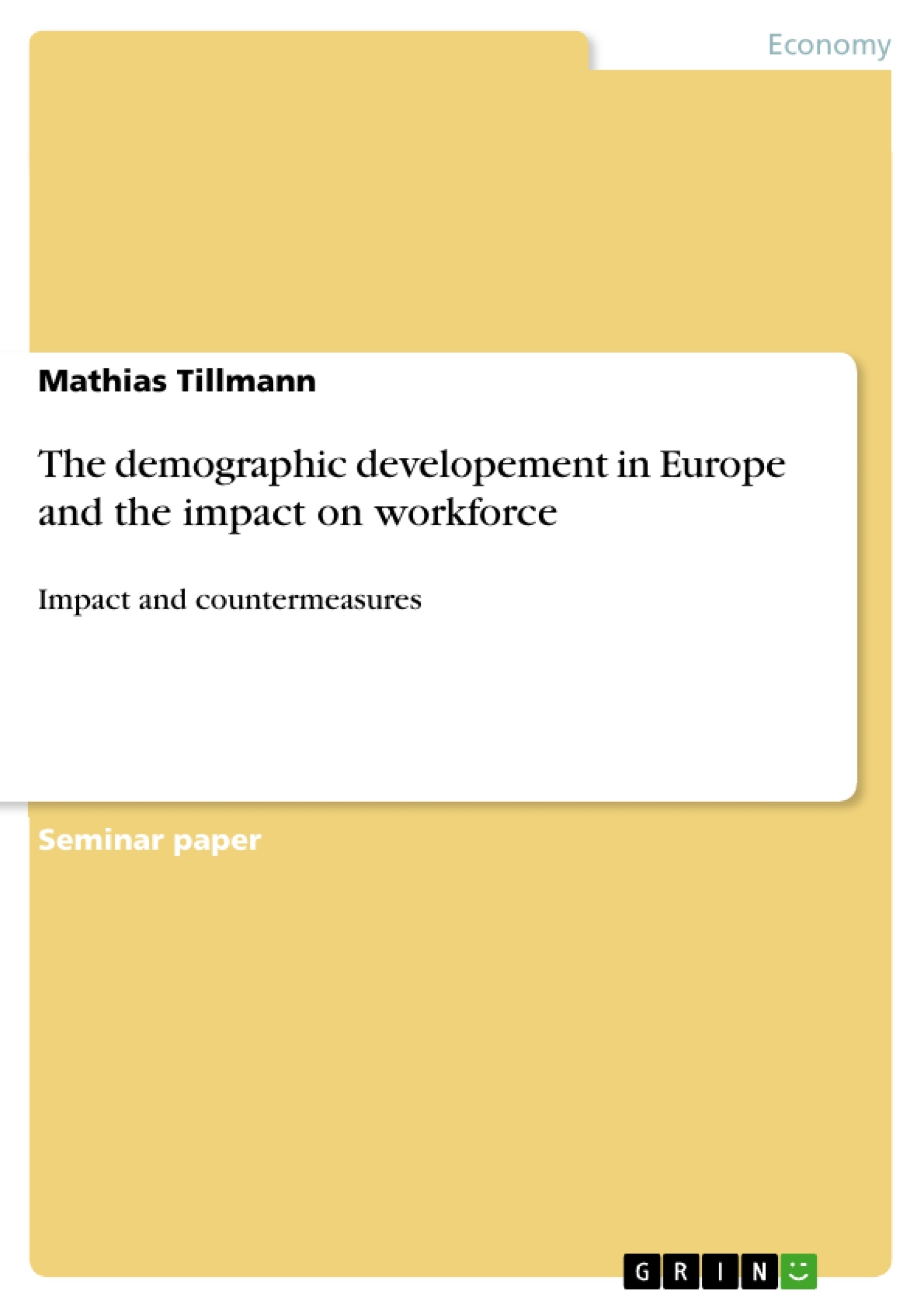Demographic change, the "war for talent", global competition - key words that companies should seriously deal with. Whether in trade magazines, regional newspapers, Internet articles and television news - in all media the issues of demographic change and shortage of skilled labor are omnipresent. The population in Europe is growing older due to the high living standards, while the birth rate is alarming low1. The population of working age will be strongly influenced by the older workers and decline in the longterm period from 2015 on2. Due to quantitative and qualitative imbalances in the labor market in many industries qualified young professionals are missing, while the in-house workforce is getting older continuously.
Demographic change and the resulting consequences for companies are often underestimated or ignored. Companies should have taken precautions much earlier.
Strong action is required now. But how can companies overcome the "demographic gap"?
The aim of this paper is to analyze demographic changes and their impacts on the labor markets. The paper will begin with brief r e view of Europe’s demographic development and its driving forces followed by an overview of different proposed countermeasures to prevent the consequences of demographic change.
[...]
1 Euröpäisches Statistikamt (eurostat) online: Fewer, older and multicultural? Projections of the EU populations by foreign/national background (2012), P. 5
2 eurostat online: National reports on the demographic developments in 2010 (2012 edition)0
Inhaltsverzeichnis (Table of Contents)
- Introduction
- Definition of demography
- Europe's demographic development
- Historical background
- Social and structural trends
- Ageing - changes in the labor force and the consequences
- Countermeasures - How to face the challenge?
- Promotion of higher fertility
- Immigration
- Higher productivity
- Higher labor-force participation rate
- Higher participation in the group of young workers
- Higher participation of females
- Higher participation of older workers
- Conclusion
Zielsetzung und Themenschwerpunkte (Objectives and Key Themes)
The paper aims to analyze demographic changes and their impacts on the labor markets. It begins with a review of Europe's demographic development and its driving forces, followed by an overview of different proposed countermeasures to prevent the consequences of demographic change. Key themes and ideas discussed in the paper include:- The demographic change and its impact on companies
- The declining birth rate and increasing life expectancy in Europe
- The influence of historical events and structural trends on population development
- The role of women's emancipation and changing societal values in demographic change
- Countermeasures to address the challenges posed by demographic change
Zusammenfassung der Kapitel (Chapter Summaries)
Introduction
This chapter introduces the topic of demographic change and its importance for companies. It highlights the challenges posed by an aging population and a shrinking workforce in Europe. It also outlines the paper's objectives and the topics it will cover.Definition of demography
This chapter defines the term "demography" and explains its key aspects: fertility, mortality, nuptiality, and migration. It also describes how these factors influence the age structure of a population.Europe's demographic development
Historical background
This section examines the historical background of demographic change in Europe, tracing it back to the early 20th century. It highlights the role of major wars and their impact on population decline.Social and structural trends
This section explores social and structural trends that contribute to demographic change in Europe. These include changing values, technical advancements, globalization, and the emancipation of women. It examines how these factors influence family planning, the role of women in society, and the demand for higher living standards.Countermeasures - How to face the challenge?
This chapter discusses various countermeasures that companies and governments can implement to address the challenges of demographic change. It covers topics such as promoting higher fertility, immigration, increasing productivity, and raising the labor-force participation rate.- Quote paper
- Mathias Tillmann (Author), 2012, The demographic developement in Europe and the impact on workforce, Munich, GRIN Verlag, https://www.grin.com/document/213044



